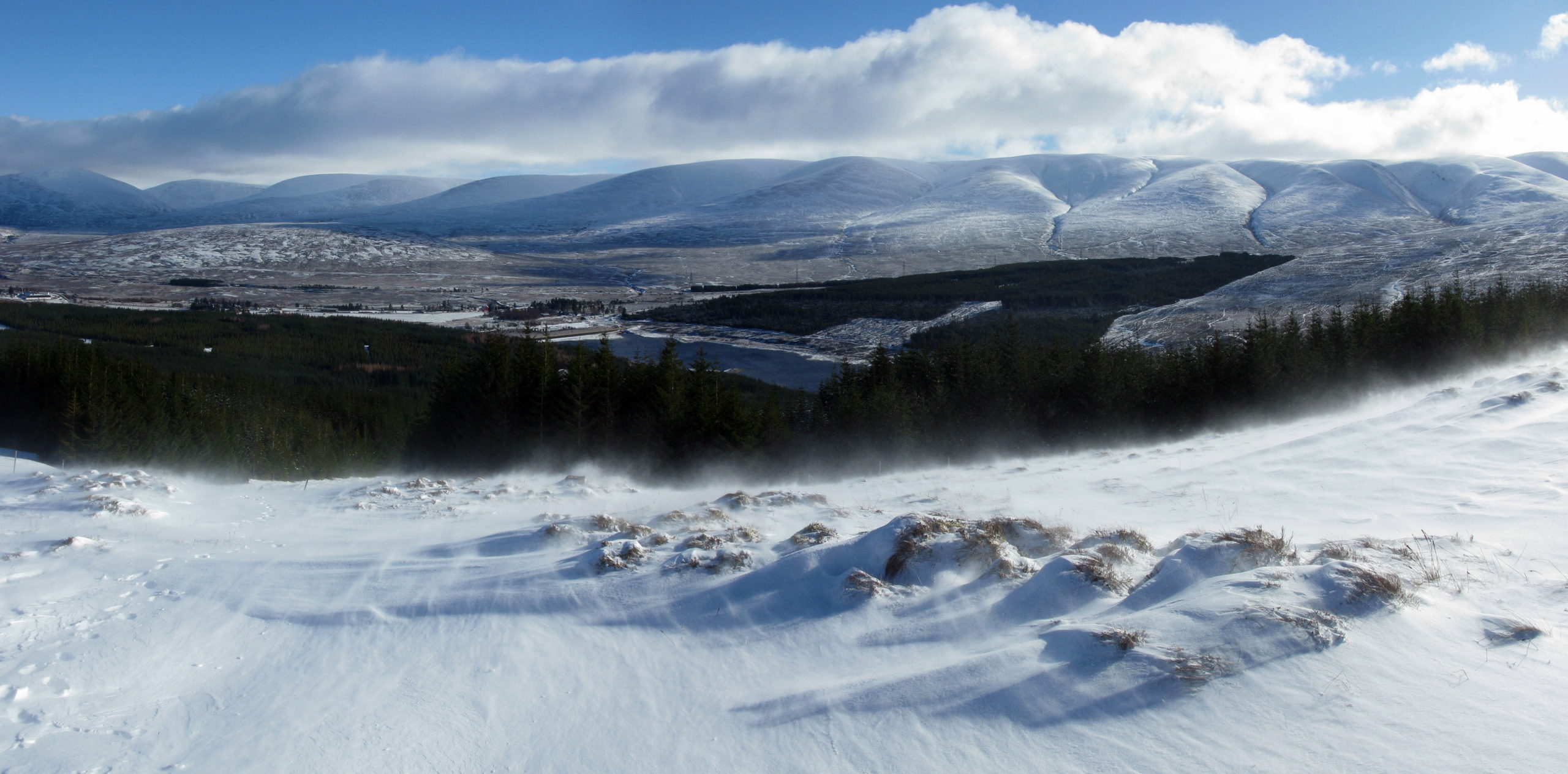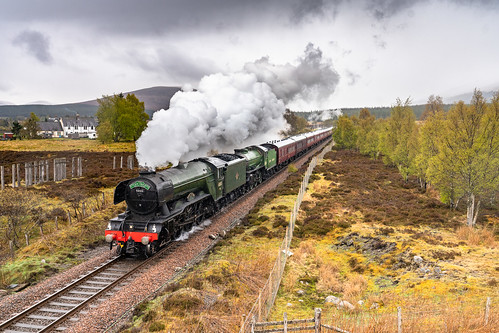Home to less than a hundred people, Dalwhinnie is the highest village in the Highlands of Scotland, and is the coldest inhabited village in the United Kingdom.
The village sits almost 360 metres above sea-level at the head of Loch Ericht, the tenth largest freshwater loch in Scotland, five miles to the north of the Pass of Drumochter and overlooking the ancient kingdom of Badenoch, the “drowned land”.
Dalwhinnie most likely takes its name from the gaelic Dail-chuinnidh, the “meeting field”, and marks the meeting place of two great cattle drove roads. Drovers making their way south would stop here to rest their herds by the loch before continuing on over the high pass to reach the cattle markets in Crieff, and the toll house where they would pay a small amount to take their animals down to the pastures by the lochside still stands in the village. An inn was built towards the end of the sixteenth century, and there’s been an inn in the village ever since.
Following the 1715 uprising a number of military roads were built to link the Highlands and Lowlands of Scotland, and one of these roads, from Dunkeld to Inverness, was the first metalled road laid through the village. Constructed by General Wade between 1728 and 1730 this road became the A9, the “Great North Road” which passed through the heart of the Dalwhinnie until the village was by-passed in 1975.

In the 1950s there were three petrol stations and two hotels in the village, as well as shops and cafes providing services to passing travellers.

In the heart of the Cairngorms National Park, the village is surrounded by a spectacular wilderness of lochs and mountains. There are fifteen “Munros” (hills over 3,000 feet high) within walking or cycling distance of the village, including Ben Alder (1,148 metres), Meall Chuaich (951 metres) and Geal-Chàrn (1,132 metres).
Only a few miles away is the “centre of Scotland”, marked by a plaque and stone by the side of the Glentruim Road, another of General Wade’s network of military roads built in 1719 to connect nearby Ruthven Barracks with Fort Augustus.
The Highland railway linking Inverness and the north of Scotland with the south also passes through Dalwhinnie, on its way to the Drumochter pass. At the summit of the pass the railway line is 452 metres (1,480 feet) above sea level, the highest point in the UK rail network. There’s been a station in Dalwhinnie since the railway was built in 1863, and today the Caledonian sleeper service stops in the village on its way to and from London.

A key Sustrans cycle route passes through the village, as do various long distance walking routes, including a number of coast-to-coast routes.
However, the village is probably best known for the whisky produced here, a light and heathery Speyside malt. Dalwhinnie is one of the six “classic malts of Scotland”, and the distillery, the highest in Scotland, has an impressive visitor centre and offers year-round tours.